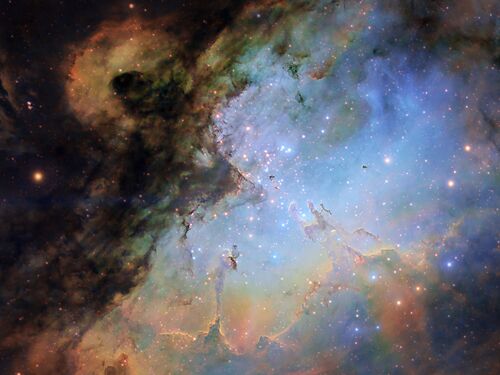Completed
As one of the five panels that will provide input to the steering committee of the Decadal Survey for Solar and Space Physics (Heliophysics) 2024-2033; the Panel on Space Weather Science and Applications has been tasked with providing an overview of the current state of research and operational capabilities related to space weather.
Description
Panel on Space Weather Science and Applications
The Panel on Space Weather Science and Applications will provide an overview of the current state of research and operational capabilities related to space weather. The panel will identify the highest priority research and operational goals and investments to address space weather user needs and enhance the space weather pipeline from basic research to applications to operations for 2024-2033. The panel will suggest to the decadal survey Steering Committee an investment strategy to address the research and operational goals. The panel will identify investments needed to lay the groundwork for continued advancement in future decades.
Overall Project Statement of Task
The National Academies of Sciences, Engineering, and Medicine shall establish a Decadal Survey Committee (the “Survey Committee”) to develop a comprehensive science and mission strategy for solar and space physics (heliophysics) research and operations with recommended activities for a 10-year period beginning in approximately 2024. The Survey Committee, informed by the activities of Academies-appointed study panels, informal working groups, and input from the solar and space physics community, will generate consensus recommendations to advance and expand the frontiers of solar and space physics in the current decade and lay the groundwork for continued advances in future decades.
The report from the Survey Committee will:
1. Provide an overview of the current state of solar and space physics science and applications, including:
a. Topics historically part of solar and space physics decadal surveys, including:
i. The structure of the Sun and the properties of its outer layers in their static and active states,
ii. The characteristics and physics of the interplanetary medium from the surface of the Sun to interstellar space beyond the boundary of the heliosphere, and
iii. The consequences of solar variability on the atmospheres and surfaces of other bodies in the solar system, and the physics associated with the magnetospheres, ionospheres, thermospheres, mesospheres, and upper atmospheres of the Earth and other solar system bodies;
b. New and emerging frontiers where solar and space physics expertise enables significant advances, including but not limited to
i. science related to the interstellar medium, astrospheres (including their stars), exoplanets, and planetary habitability, and
ii. applications related to robotic and human exploration in and beyond low-Earth orbit and the lunar environment; and
c. The space weather pipeline from basic research to applications to operations, including the research-to-operations-to-research loop that strengthens forecasting and other predictive capabilities.
2. Describe the highest priority science goals to be addressed in the period of the survey. In doing so:
a. Identify the focused parts of those goals where measurable progress can be made, where frontiers can be expanded, and that improve possibilities for scientific growth in the future; and
b. Note where an interdisciplinary or system science approach is needed.
3. Develop a comprehensive ranked research strategy that provides an ambitious, but realistic, approach to address these science goals. The strategy will include consideration of:
a. The combination of ground- and space-based investigations to enhance progress on the prioritized science goals.
b. Data and computing infrastructure needed to support the research strategy and the long-term utility, usability, and accessibility of acquired data;
c. Technical, risk, and cost assessments of recommended major investments, when deemed useful;
d. Decision rules that can accommodate reasonable projected budget deviations or changes in activities' urgency; and
e. The international landscape, inter-agency collaborations, public-private relationships, and innovative partnerships.
4. Assess the state of the profession, encompassing, but not limited to:
a. Identifying the workforce expertise and capabilities needed to implement the scientific and technical priorities identified by the survey, including the identification of paths for entry into the community, needs for professional development, and challenges to workforce retention;
b. Evaluating the health and vitality of the community working in the solar and space physics subfields, which includes:
i. Assessing, to the greatest extent possible, the subfields against the metrics for health and vitality established by the Foundation for Assessing the Health and Vitality of the NASA Science Mission Directorate's Research Communities [study report due to be published Q1 2022], and
ii. Identifying challenges to the community responding to new and emerging scientific fields;
c. Identifying issues of concern regarding diversity, equity, accessibility, and inclusion; and
d. Recommend, using established best practices, actions to improve the health and vitality of the community.
Recommendations regarding operational space weather activities and/or projects shall be directed to only NOAA. Recommendations regarding establishing new or supporting established ground-based observatories shall be directed to only NOAA and NSF, as appropriate. Recommendations regarding spaceflight projects shall be directed to only NOAA and NASA.
Contributors
Committee
Co-Chair
Co-Chair
Member
Member
Member
Member
Member
Member
Member
Member
Member
Member
Member
Committee Membership Roster Comments
10/17/22 Co-chairs posted. 1/11/23 members posted. 3/29/23 Maura Hagan resigned. 5/19/23 Emma L. Spanswick added.
Sponsors
Department of Commerce
Department of the Air Force
NASA
National Science Foundation
Staff
Art Charo
Lead
Abigail Sheffer
Lead
Dionna Wise
Megan Chamberlain
Major units and sub-units
Center for Advancing Science and Technology
Lead
Aeronautics, Space, and Astronomy Program Area
Lead
